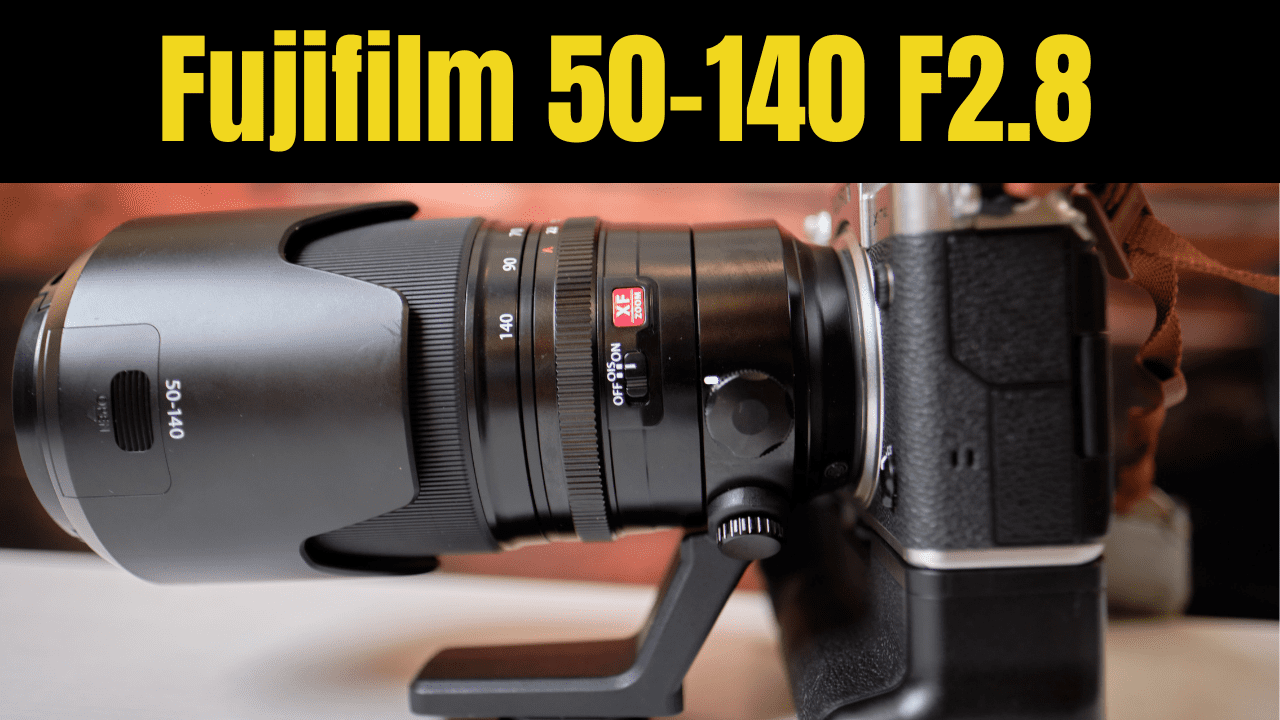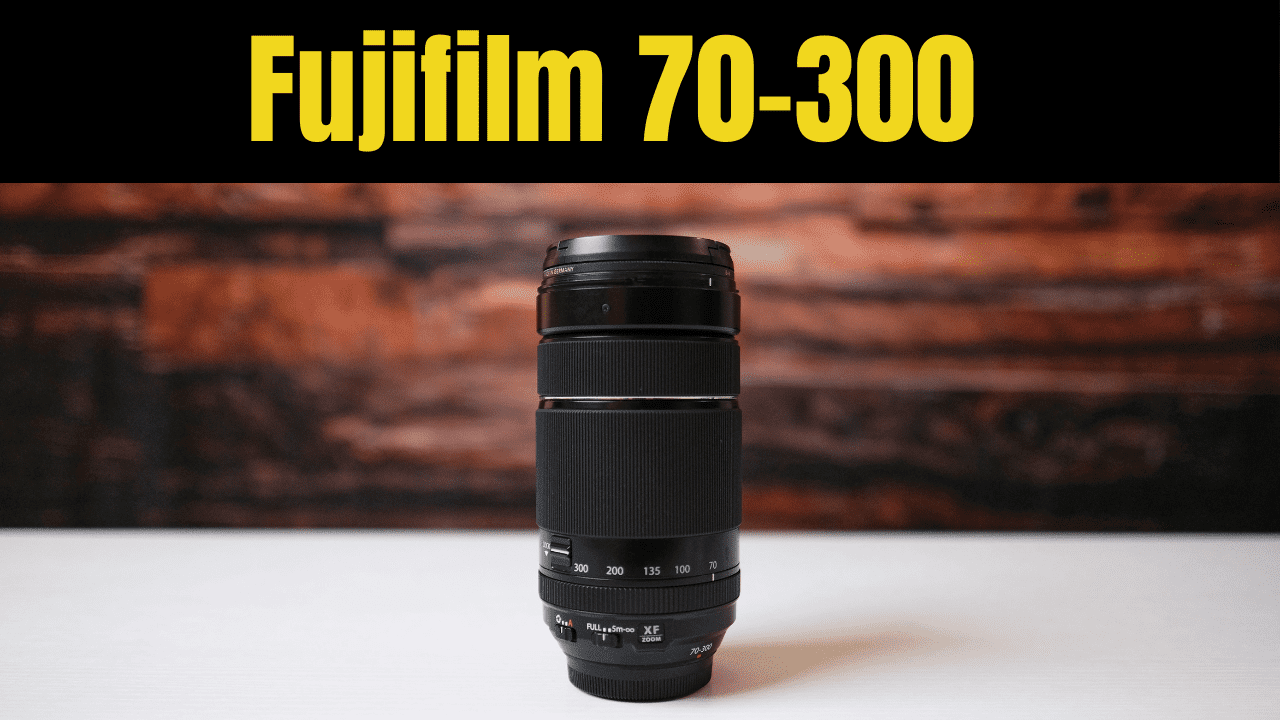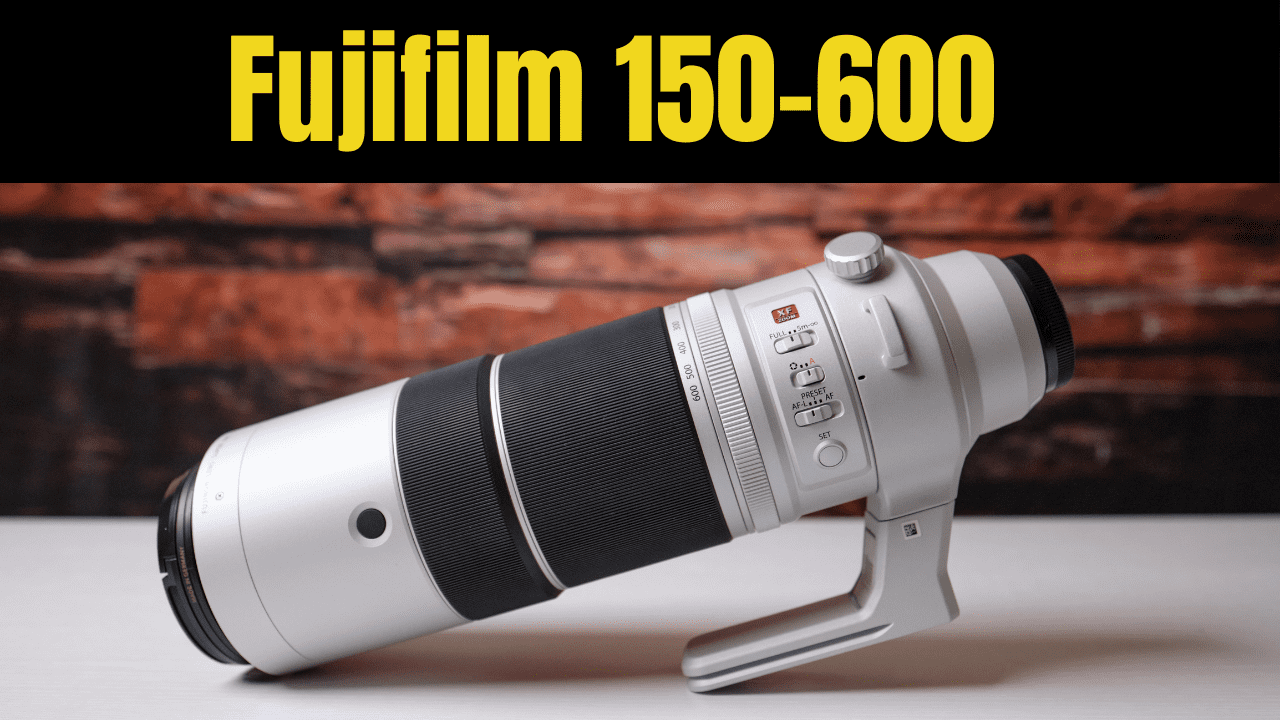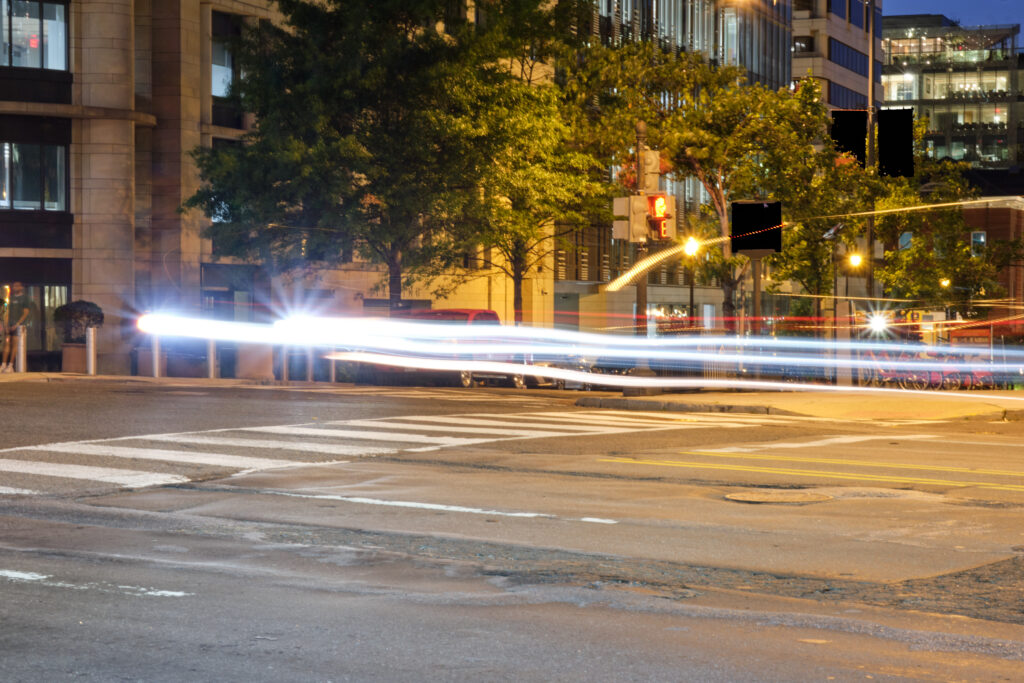Table of Contents
Quick Facts
Quick Facts about the Fujifilm XF 50-140mm F/2.8 R LM OIS WR Lens
- Weight: 2.19 lb/995 Grams
- Weather Sealed: Yes
- Filter Size: 72mm
- Angle of View: 31.7 to 11.6 Degrees
- Focusing Distance: 3.28’/1m
- Max Aperture: F2.8
- Minimum Aperture: F22
- Image Stabilization: Yes
- Mount System: Fuji X
- Price: $1,599
- Zoom: Internal
- Accepts Teleconverters*
Quick Facts about the Fujifilm XF 55-200mm F3.5-4.8 R LM OIS
- Weight: 1.27 lbs/580 Grams
- Weather Sealed: NO
- Filter Size: 62mm
- Angle of View: 29 to 8.1 Degrees
- Focusing Distance: 3.61’/1.1m
- Max Aperture: F3.5-4.8
- Minimum Aperture: F22
- Image Stabilization: Yes
- Mount System: Fuji X
- Price: $699
- Zoom: Extension
Quick Facts about the Fujifilm XF 70-300mm F4-5.6 R LM OIS WR Lens
- Weight: 1.3 lb/588 Grams
- Weather Sealed: Yes
- Filter Size: 67mm
- Angle of View: 22.9 to 5.4 Degrees
- Focusing Distance: 2.7’/.8 Meters
- Max Aperture: F4-F5.6
- Minimum Aperture: F22
- Image Stabilization: Yes
- Mount System: Fuji X
- Price: $799
- Zoom: Extension
- Accepts Teleconverters*
Quick Facts about the Fujifilm XF 100-400 F4.5-5.6 R LM OIS WR
- Weight: 3.03 lbs/1375 Grams
- Weather Sealed: Yes
- Filter Size: 77mm
- Angle of View: 16.2 to 4.1 Degrees
- Focusing Distance: 5.74’/1.75m
- Max Aperture: F4.5-F5.6
- Minimum Aperture: F22
- Image Stabilization: Yes
- Mount System: Fuji X
- Price: $1,899.95
- Zoom: Extension
- Accepts Teleconverters*
Quick Facts about the Fujifilm XF 150-600mm F5.6-8 LM OIS WR Lens
- Weight: 3.5lbs/1605 Grams
- Weather Sealed: Yes
- Filter Size: 82mm
- Angle of View: 10.8 to 2.7 Degrees
- Focusing Distance: 7.9’/2.4m
- Max Aperture: F5.6-F8
- Minimum Aperture: F22
- Image Stabilization: Yes
- Mount System: Fuji X
- Price: $1,999
- Zoom: Internal
- Accepts Teleconverters*
Who are Fujifilm cameras designed for?
Within the past couple of years, Fujifilm has attempted to make great strides within their X-Mount series. However, this focus (in my opinion) was due to questions about the future-proofing of the Fujifilm series.
Despite an amazing burst rate (30 frames per second on the X-T4; 20 Frames per second on the X-T3), the X-Trans IV sensor was beginning to show its age by the end of 2020. Canon and Sony had superior autofocus tracking, OM and Panasonic had better Internal Body Image Stabilization, and the list goes on and on.
Photographers will argue with me, and say that Fujifilm allows them to create art. The dials create a throwback to simpler times, and superior autofocus is not needed for those events. Meanwhile, videographers like the straight out-of-camera colors and the manual-focus clutch on some of the lenses! (These comments are coming directly from comments on my YouTube videos.)
Now, despite understanding both arguments, I think it is important to note that both arguments are rather niche. Numerous people want cameras with dials; however, my generation wants cameras with dials and film. (If we are going retro, we are going all out.)
Additionally, straight out of camera colors are great! But so many people color-grade in the 2020’s, the importance of great, flat color profiles (and having a lot of them) are important.
I guess what I am trying to say is…. I am excited for the new developments of the X-Trans V sensor. Yes, there is the PASM dial. However, the second F-Log Profile, better eye autofocus, and some-what better IBIS is promising.
An Introduction to the Fujifilm XF Telephoto Lenses
Beyond their innovation in camera body technology, Fujifilm has also spent the last couple of years heavily investing in their telephoto glass. Since 2021, we have seen the introduction of both the 70-300 and the 150-600. This brings the entire XF catalog to include the:
- Fujifilm XF 50-140
- Fujifilm XC 50-230
- Fujifilm 70-300
- Fujifilm 100-400
- Fujifilm 150-600
- Fujifilm 200mm F2
So, today we are going to be covering all the XF telephoto zoom lenses. Let’s get into it!
Field of View
Build Quality
Whenever I examined the build-quality of each of the lenses, I noticed a few things. First off, the newer lenses, such as the 70-300 and the 150-600, have much more of a “premium” feel over the 55-200 and 100-400. The plastic felt like a higher-quality, the zoom rings felt a bit tighter, etc, and etc. That being said, I was never concerned about the longevity of any of the lenses. I have used the 55-200 at Skogafoss in Iceland, and I still use it to this day.
If I had to rank the lenses in regards to build-quality, it would go:
Build Quality Ranking:
#1 50-140
#2 150-600
#3 70-300
#4 55-20
#5 100-400
Dials, Switches, Buttons, Tripod foot, and More
50-140
Switches
- OIS-ON/OFF
Extras
- Tripod Foot
55-200
Switches
- OIS – ON/OFF
- Aperture Mode Switch
100-400
Switches
- OIS – ON/OFF
- Focus Range Selector (Focus Range Limiter)
- Aperture Mode Switch
Extras
- Tripod Foot
70-300
Switches
- Focus Range Selector (Focus Range Limiter)
- Aperture Mode Switch
- Zoom Lock
150-600
Switches
- Focus Range Selector (Focus Range Limiter)
- Aperture Mode Switch
- Focus Selector
Buttons
- One Focus Preset Button
- 4 Focus Control Buttons
Extras
- Shoulder Strap Eyelet
- Tripod Foot
Sharpness Test by Focal Length & Aperture
There were two ways in which I could organize this.
#1: By Focal Length and Aperture
#2: By Lens
So, I decided to do both.
The primary reason I elected to do this, is sometimes you need to know which lens will perform best at a certain focal length. (For example, if you are comparing the 50-140 vs the 55-200)
If you would like a more organized version of this, please skip this section and see below.
This being said,
- At 100mm, the 50-140mm is the sharpest.
- At 200mm, the 70-300mm is the sharpest.
- At 300mm, the 150-600mm is the sharpest.
- At 400m, the 150-600mm is the sharpest.
- At 500mm, the 150-600mm is your only option.
- At 600mm, the 150-600mm is your only option.
Sharpness Test by Lens
(Organized)
About the 50-140
- Starting at around F2,8, sharpness remains excellent throughout the entire zoom range. Kudos to Fujifilm for that.
- The 50-140 appeared weaker at the short-end rather than the longer end.
- The lens performs worst at F2.8…as expected.
About the 55-200
After reviewing the 55-200 lens, here are a few things I noticed regarding the image quality and sharpness test.
- This lens performs its best throughout the entire middle-portion of the zoom range. (From about 70mm-140mm)
- Performance begins to decline at 140mm, and you can start to see the image degradation beginning at 170mm.
- The variable aperture presents a problem, especially when testing the lens for sharpness.
- For some odd reason, the lens performed rather poorly at 50mm.
About the 70-300
Now, here is what I noticed from the Fujifilm’s 70-300 image quality test
- The corners seemed a *bit softer at 70mm @F4.
- The corners at 70mm @F8 and 300mm @F8 look similar in regards to image quality/sharpness
- This lens is very sharp throughout the entire focal range.
About the 100-400
- The lens has its best output between 150-300mm. (Typical of zoom lenses)
- Noticeable fall-off. If I had to guess, the fall-off severely affected the image quality around 370mm. But the degradation actually started taking place around 350mm.
About the 150-600
- It appears that the lens’s sharpness peaks at F8. (For all Focal Lengths)
- I noticed a slight fall-off around 500 millimeters. If you bounce between the photos labeled 502mm @F8 and 391.4mm @F8, focus on the line of bubbles above the mortar joint. You will see the reduction in sharpness.
- I was mostly happy with the lens sharpness. I don’t expect to be taking too many photographs of brick walls at F11. However, it’s nice to know if I need to, I can.
When do the apertures change?
50-140
50mm | 70mm | 110mm | 140mm |
@F2.8 | @F2.8 | @F2.8 | @F2.8 |
55-200
55mm | 60mm | 70mm | 77mm |
@F3.5 | @F3.6 | @3.7 | @F3.8 |
85mm | 95mm | 104mm | 128mm |
@F3.9 | @F4 | @F4.2 | @F4.4 |
148mm | 164mm | 172mm | 190mm |
@F4.5 | @F4.6 | @F4.7 | @F4.8 |
It’s honestly quite amazing (and annoying) to see how the maximum aperture slowly changes throughout the focal range.
70-300
70mm | 100mm | 135mm | 300mm |
@F4 | @F4.5 | @F5 | @F5.6 |
100-400
*I forgot to test this. However, I consulted with numerous sources. And they all suggested the same thing.
100mm | 200mm | 300mm | 400mm |
@F4.5 | @F5.0 | @F5.2 | @F5.6 |
150-600
150mm | 185mm | 316mm | 539mm |
@F5.6 | @F6.4 | @F7.1 | @F8 |
I’m not going to lie, the 150-600 is very difficult to photograph with. At 316mm, I had an aperture of F7.1. There are only a few hours of each day that are bright enough to justify that aperture and allow for a fast-enough shutter speed for sharp photos.
Bokeh Comparison
If you are looking at any of these lenses for bokeh, you should know that the only lens that provides an F-Stop of less than F4 is the 50-140 F2.8. Yes, I know it’s in the name of the lens…
If you are new to photography, this means that you cannot rely on a shallow depth–of field via the aperture. (Bokeh, for most photographers, is synonymous with depth of field. To get a shallower depth of field, it is a combination of focal length and aperture.)
So, despite the 50-140 being the standard event telephoto lens with a full-frame equivalent of 70-200, I actually wouldn’t recommend it. The bokeh seemed quite nervous, which is not acceptable for something that costs over $1,500. Rating the XF telephoto lenses, it would go:
- 70-300
- 150-600
- 50-140
- 55-200
- 100-400
Bokeh Balls Comparison
50-140
The Fujifilm 50-140 f2.8’s bokeh balls does suffer from cat’s eye. They are mostly round by F4, and are circular by F5.6.
55-200
I have 2 things I noticed about the 55-200’s bokeh balls.
- They never quite rounded-out.
- Noticeable onion ring effect.
70-300
For the 70-300, I think the lens’s bokeh balls performed amicably. There were no onion rings at any apertures. However, starting at F4, we will not have round bokeh balls in the corners or side of the frame. As we stop-down, we do have round bokeh balls by F6.4. I believe that the 50-140 competes with the 70-300 head to head in this category.
100-400
When reviewing the bokeh balls of this lens, my first impressions on the back of the LCD screen were mostly positive @F4.5.
However, when examining these pictures in post-production past F4.5, I noticed something… the bokeh balls aren’t round.
150-600
I’m not going to lie, testing the 150-600 was the first-time I have ever used a super-telephoto zoom lens. And just like the bokeh test above, I was pleasantly surprised by the results and shape of the bokeh balls. At all apertures, you will be able to achieve mostly round bokeh balls. However, here’s three quick takeaways.
- At F5.6, the bokeh balls suffered from a large amount of cat’s eye in the corner.
- At F11, the bokeh balls started to develop a slight hexagonal shape. You really have to zoom in on it; however, it’s there. (You might be wondering, why would I care what the bokeh balls look like at F11? And the answer is… I don’t know.)
- This lens did not have any onion-ring effect.
Focusing Distance and Macro Performance
For the 55-200, we have a focusing distance of 1.1 meters/3.67 feet. The maximum magnification ratio is .18x.
For the 50-140, we have a focusing distance of 1 meter/3.28 feet. The maximum magnification ratio is a meager .12x. (Yikes…)
For the 70-300, the focussing distance is .83 meters/2.7 feet. The maximum magnification ratio is .33x.
For the 100-400, the focusing distance is 1.75 meters/5.74 feet. The maximum magnification ratio is .19x.
For the 150-600, the focusing distance is 2.4 meters/7.9 feet. The maximum magnification ratio is .24x.
If you are going to be using this lens for any macro-style photography, pick the 70-300.
OIS Test
- For the 50-140, the OIS is rated for up to 5 stops. (6 stops with the X-T4’s IBIS engaged.)
- For the 55-200, the OIS is rated for up to 4.5 stops.
- For the 70-300, the OIS is rated for up to 5.5 stops.
- For the 100-400, the OIS is rated for up to 5 stops.
- For the 150-600, the OIS is rated for up to 5 stops.
I will let you make your own determinations from the videos below. However, I did notice some things.
- Despite the 150-600 and 100-400 both being rated for “up to” 5 stops, the 150-600 performed better.
- The 50-140’s OIS was the best.
- Sadly, the 55-200 just could not compete with the other lenses.
Ranking the Fujifilm telephoto lenses by OIS, it would go:
#1: 50-140
#2: 70-300
#3 150-600
#4 100-400
#5 150-600
Video Autofocus & Tracking
- Any Eye
- Tracking Sensitivity +2
- Autofocus Speed +3
Unfortunately, I tested these on the X-T4. Although a very capable camera, the camera repeatedly loses the subject (me) in the trees and branches. There are numerous ways to avoid this including using manual focus or setting a focus limiter. All cameras are a compromise, and the Fujifilm ecosystem is no different.
Starburst/Sunburst
Sunstars/Starbursts… whatever you want to call them, they are much more of an added bonus on telephoto lengths than actually necessary.
Ranking them, it’s very clear that the 50-140 wins this category.
- 50-140
- 70-300
- 55-200
- Either the 100-400 or 150-600. It’s a toss-up.
- Either the 150-600 or 100-400. It’s a toss-up.
Why should I pick the 70-300 over the 55-200?
- Optically, the Fujifilm 70-300 dominates the 55-200 in every category.
Why should I pick the 150-600 over the 100-400?
- Reach
Look, there is no doubt in my mind. At some points when I was testing the 150-600, it felt like a cheat code.
- Price/Quality
I think the 150-600 certainly has a premium feel for $2,000. It’s enough to turn heads, and the quality certainly made me do a double-take in both the field and post-production.
Plus, I think the 150-600 is built better.
Why should I buy the 50-140?
- Low-Light
In three categories that involve low-light photography, the 50-140 wins handily. First, it’s the ability to shoot at F2.8. (Despite the bokeh being subpar.) Second, the OIS helps and is arguably the best. Third, the ability to get round starburst-like effects.
- Build Quality
It’s the best-built lens by Fujifilm that I have ever tested.
The Skinny on Each Lens
The 55-200 is a budget kit lens.
The 70-300 is the best XF telephoto lens. It wins in price, weight, and has superb performance throughout the zoom range.
The 100-400 is highly overpriced and does not have great built quality.
The 50-140 is the best in regards to sharpness and low-light. However, it just feels a bit expensive.
The 150-600 is a premium, niche product that is one of the few Fujifilm XF telephoto lenses deserving of the $1,500+ price tag.
My Final Ratings
Fujifilm XF 100-400 F4.5-5.6 R LM OIS WR
Reliability: 3.5/5
It’s mostly reliable as long as you don’t need to take photos of brick walls at 400mm AND birds don’t fly within 6 feet (1.8 meters) of you.
Functionality: 3.5/5
Yeah, it wins back some points here. The 100-400 is a good focal length.
Style: 4/5
-1 point for always showing fingerprints.
Total: 13/20 or 65%.
Fujifilm XF 55-200mm F3.5-4.8 R LM OIS
Reliability: 3/5
This lens struggled only when I attempted to record video in continuous tracking. However, it does take a significant hit because of the loss of image quality.
Functionality: 4/5
When it comes to the 80-300mm equivalent, this focal length is desirable and has utility. However, the points are lost for a lack of low-light functionality.
Style: 4.5/5
These are always bonus points. Build quality is good, but -.5 for zoom creep when it’s in my backpack.
Total: 16.5/20 or 82.5%
Fujifilm XF 70-300mm F4-5.6 R LM OIS WR
Reliability: 5/5
This lens is very reliable, well-built, and all around an excellent travel lens. I would happily take it on an around-the-world adventure.
Functionality: 4/5
Sometimes, it did feel just a bit too long for city scapes, and you cannot shoot past 7:00PM on a winter day. But pair it with another lens for night photography and you will be good.
Style: 4.5/5
These are always bonus points. But the 70-300 looks classy.
Total: 18.5/20 or 92.5%
Fujifilm XF 150-600mm F5.6-8 LM OIS WR
Do I wish it was $200 cheaper? Yes, absolutely. However, it is good enough for $2,000.
Reliability: 4/5
The points are lost mainly due to low-light. It can be worked around with by using a tripod, however,
Functionality: 5/5
One of the largest FOV changes in a camera lens that I have ever seen.
Style: 5/5
Looks good. Looks Expensive.
Total: 18/20 or 90%
Fujifilm XF 50-140mm f2.8 R LM OIS WR
Price: 2.5/5
Photography isn’t a cheap hobby, and I think the price is excessive. I could purchase the 70-300 AND a prime lens for the cost of this.
Reliability: 4/5
Paired with the X-T4 or X-T3, it is reliable and the autofocus is good (enough) for most occasions for photography. But for video, no. Plus, I don’t foresee any issues when it comes to build quality. This will deserve a re-test with the X-H2s.
Functionality: 4/5
When it comes to the 70-200 FF equivalent, this focal length is desirable and has utility. However, the points are deducted as the center of gravity prevents this lens from being held comfortably on most Fujifilm cameras.
Style: 4/5
Metal and well-built, the Fuji 50-140 is nice. HOWEVER, the metal body leaves fingerprints. -1 Point for always looking dirty.
Total:14.5/20 or 72.5%




























































































































































































